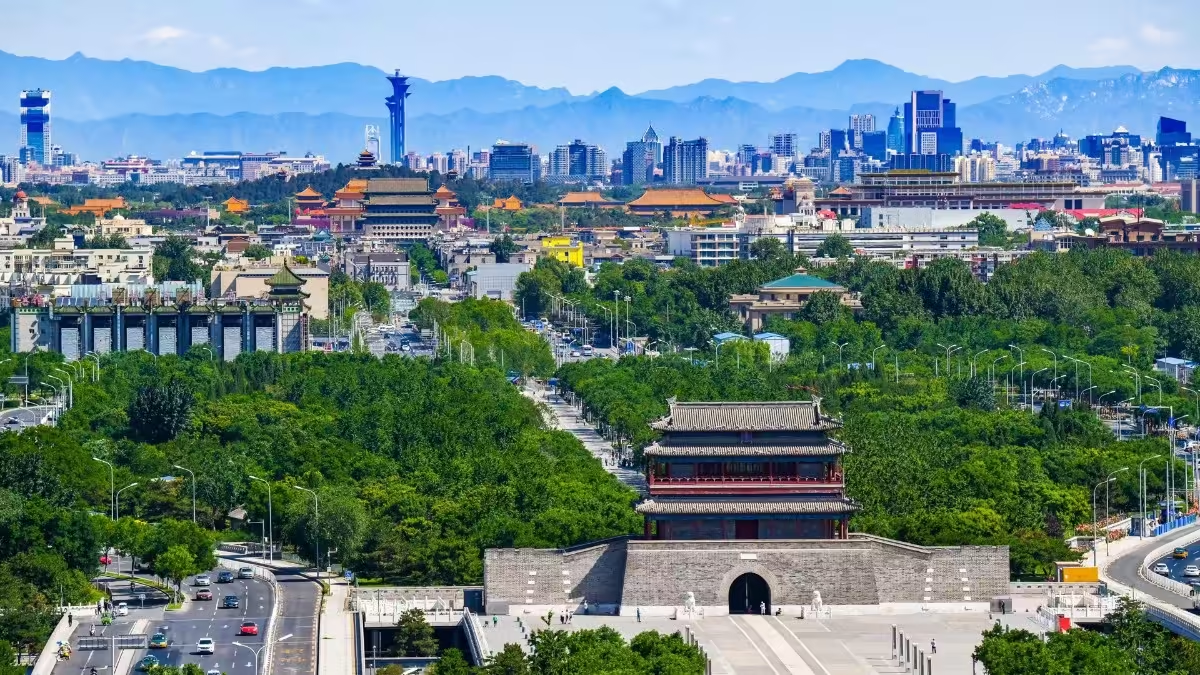Beijing, with its extensive and complex history, has been at the center of China’s political, cultural, and economic life for centuries. Its evolution from an ancient settlement to the modern capital of China reflects a rich tapestry of historical events and cultural shifts. This expansive narrative covers the city’s development from prehistoric times through the Qin and Han dynasties, the Liao and Jin periods, the Yuan and Ming dynasties, and into the Qing Dynasty and modern era.
Ancient Times
Beijing’s history stretches back to ancient times, with evidence of human habitation dating from approximately 700,000 to 200,000 years ago. The discovery of Peking Man at the Zhoukoudian site represents one of the most significant finds in human prehistory. Peking Man, a member of Homo erectus, used natural fire and stone tools, marking an important step in the development of early human societies. This period highlights the rudimentary yet crucial advancements made by our ancestors in tool-making and fire control.
Later, during the Upper Paleolithic period, the Cave Man, a late-stage Homo sapiens, lived in the same area. These early humans had developed the capability to create fire artificially and relied predominantly on hunting for survival. Their advanced tool-making and the use of fire for cooking and warmth represent a significant leap in human evolution and adaptation.
Qin and Han Dynasties
The Qin Dynasty (221–206 BCE), established by Emperor Qin Shi Huang, marked a turning point in Beijing’s history. The Emperor’s unification of China led to the initiation of the Great Wall’s construction, which connected various defensive walls of the Qin, Zhao, and Yan states. This early version of the Great Wall was designed to protect the newly unified empire from northern invasions. The monumental project laid the groundwork for the more extensive walls built in subsequent dynasties.
In 202 BCE, the Han Dynasty’s Gaozu Emperor incorporated the area of Ji County, modern-day Beijing, into the Yan State’s jurisdiction. The Han Dynasty played a crucial role in expanding and solidifying the central authority, setting the stage for Beijing’s importance as a political and administrative center.
Liao and Jin Periods
The Liao Dynasty (907–1125 CE), founded by the Khitan people, marked another important phase in Beijing’s history. In 938 CE, Emperor Taizong of Liao designated Beijing as Nanjing, or “Southern Capital.” This designation emphasized Beijing’s role as a significant regional center within the Liao Dynasty’s empire. During this period, Beijing began to develop a more defined urban character.
In the Jin Dynasty (1115–1234 CE), which followed the Liao, the city continued to flourish. In 1179 CE, the Jin Dynasty’s Emperor Shizong constructed the Daming Palace, an architectural marvel inspired by the Northern Song Dynasty’s Bianjing. The Daming Palace, located in what is now Beihai Park, was an important center of administration and culture.
Yuan Dynasty
The Yuan Dynasty (1271–1368 CE), established by Kublai Khan, marked a significant transformation for Beijing. In 1264 CE, Kublai Khan renamed the city Zhongdu, and by 1272 CE, it was officially known as Dadu. As the capital of the Yuan Dynasty, Dadu became a major political and cultural hub, reflecting the grandeur and complexity of Mongol rule over China.
The establishment of the Beijing Imperial Academy in 1306 CE, initially named Beiping Prefectural School, was a notable development. This institution, which later became the highest educational and administrative body of the Yuan Dynasty, played a key role in shaping the intellectual and political landscape of the time.
Ming and Qing Dynasties
The Ming Dynasty (1368–1644 CE) brought another transformation to Beijing’s status. The name Zhongdu was changed to Beiping, and in 1403 CE, after Zhu Yuanzhang, the founder of the Ming Dynasty, defeated his rivals, Beijing was established as the new capital. The Ming emperors undertook extensive renovations and expansions, including the construction of the Forbidden City, which remains a symbol of imperial China.
The Qing Dynasty (1644–1912 CE), established after the Ming, continued to develop Beijing’s role as the imperial capital. The Qing army’s entry into Beijing in 1644 CE marked the beginning of Qing rule. The city was referred to as Jing-shi Shuntian Prefecture, reflecting its central role in the Qing administration. During this period, Beijing underwent further development, including the construction of the Summer Palace and the extension of the Grand Canal, which enhanced its connectivity and strategic importance.
Modern Era
The modern era brought significant changes to Beijing, starting with the early 20th century. On July 7, 1937, the Marco Polo Bridge Incident in Beijing (then Beiping) marked the beginning of the Second Sino-Japanese War. This event, known as the “July 7th Incident,” was a pivotal moment in China’s resistance against Japanese aggression and highlighted Beijing’s strategic significance during wartime.
Following World War II, Beijing was peacefully liberated from Japanese occupation on January 31, 1949. Shortly thereafter, the city was renamed from Beiping back to Beijing. This change signified the end of an era and the beginning of a new chapter in the city’s history.
On October 1, 1949, the People’s Republic of China was officially proclaimed at Tiananmen Square in Beijing. This momentous event marked Beijing’s transition to the capital of the newly established republic, setting the stage for its modern development as a global city. The establishment of the People’s Republic of China brought about significant political, economic, and social changes, further solidifying Beijing’s role as the center of Chinese governance and culture.
Today, Beijing stands as a vibrant metropolis with a rich historical legacy. From its ancient origins through its various dynastic periods to its role as the modern capital of China, the city’s past continues to influence its present and future. Beijing’s history is a testament to its enduring significance and resilience, reflecting the dynamic and ever-evolving nature of one of the world’s greatest cities.

